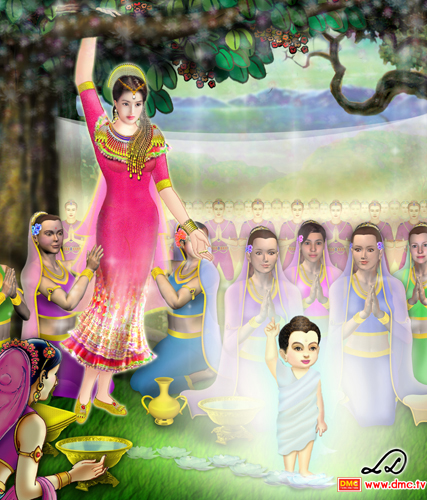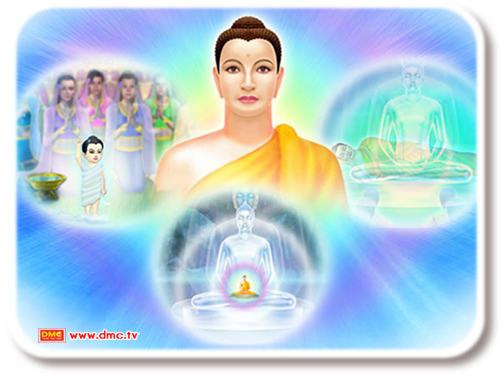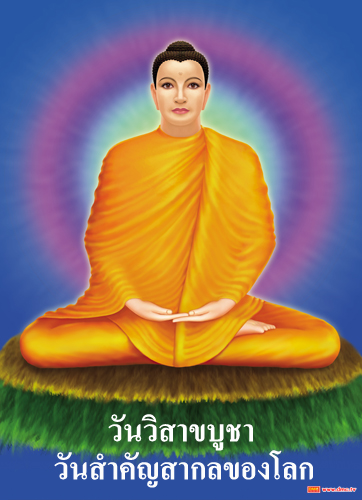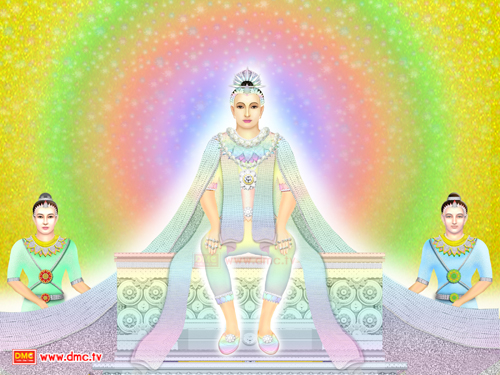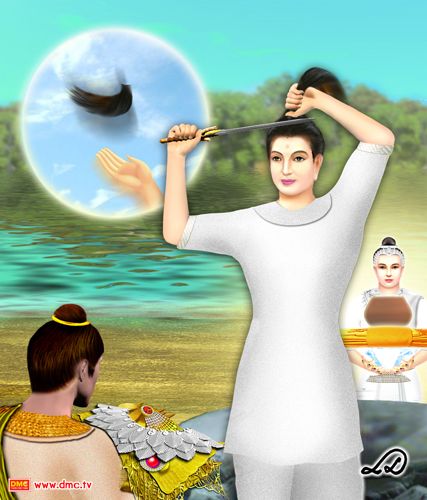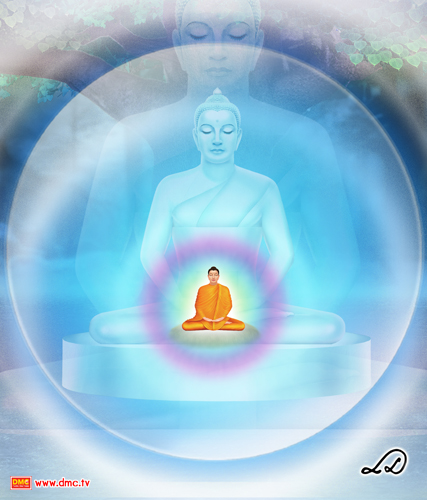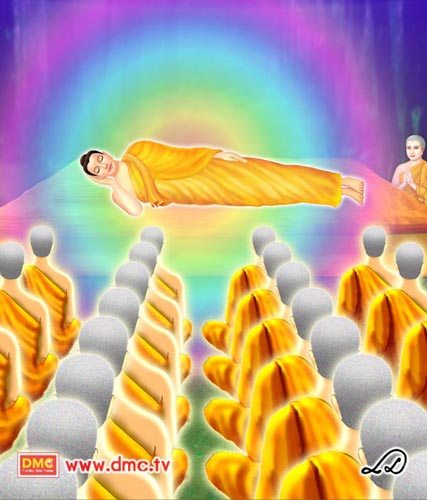4 Imponderables, Powers of a Buddha, 4 Kinds of Intrepidity Worldwide distribution of Wisdom Quarterly visitors as of Sept. 2011 (ClustrMaps.com)
Worldwide distribution of Wisdom Quarterly visitors as of Sept. 2011 (ClustrMaps.com)
ClustrMaps (see bottom of page) has a "Daily Top 1000" websites based on daily averages of unique visitors. We have been notified that worldwide we are the 734th most visited website measured by them. Now this is odd because ClustrMaps regularly under counts our daily count compared to Blogspot's own internal count by at least 50 percent. We are regularly amazed that Netizens visit Wisdom Quarterly from far outside the US, with non-US visitors sometimes exceeding American hits. It is magnificent to share the
Dharma and transformational information. We share any merit accruing to us with our readers. Tell a friend.
Four ImponderablesWisdom Quarterly translation (AN 4.77)"There are these Four Imponderables that should not be pondered because to do so would cause one to become vexed and mentally unhinged.
- The range of [influence of] a buddha is imponderable and should not be pondered because to do so would cause one to become vexed and mentally unhinged.
- The range of jhana of a person immersed in meditative-absorption [the powers one is able to obtain by way of the absorptions]...
- The [mysterious] working out of karma...
- A first cause or origin of the world...
"These are the Four Imponderables that should not be pondered because to do so would cause one to become vexed and mentally unhinged."
- *NOTE: Presumably the range of powers a buddha develops as a result of becoming a supremely enlightened (samma sam) buddha -- such as the Ten Powers of a Tathagatha (a term the Buddha used to refer to himself and others in the past like him).
 The Buddha teaches the fourfold assembly of female/male followers and nuns/monks in India.
The Buddha teaches the fourfold assembly of female/male followers and nuns/monks in India.
Ten Powers of a TathagataNanamoli Thero & Bhikkhu Bodhi translation (DN 12)1. Thus have I heard. On one occasion the Blessed One was living at
Vesali in the grove outside the city to the west.... 9. "
Sariputta, the Tathagata has these ten Tathagata's powers, possessing which he claims the herd-leader's place, roars his lion's roar in the assemblies, and sets rolling the Wheel of Brahma.
[5] What are the ten?
10. (1) "Here, the Tathagata understands as it actually is the possible as possible and the impossible as impossible.[6] And that [70] is a Tathagata's power that the Tathagata has, by virtue of which he claims the herd-leader's place, roars his lion's roar in the assemblies, and sets rolling the Wheel of Brahma.
11. (2) "Again, the Tathagata understands as it actually is the results of actions undertaken, past, future and present, with possibilities and with causes. That too is a Tathagata's power...[7]
12. (3) "Again, the Tathagata understands as it actually is the ways leading to all [rebirth] destinations [duet to the working out of karma]. That too is a Tathagata's power...[8]
13. (4) "Again, the Tathagata understands as it actually is the world with its many and different elements. That too is a Tathagata's power...[9]
14. (5) "Again, the Tathagata understands as it actually is how beings have different inclinations. That too is a Tathagata's power...[10]
15. (6) "Again, the Tathagata understands as it actually is the disposition of the faculties of other beings, other persons. That too is a Tathagata's power...[11]
16. (7) "Again, the Tathagata understands as it actually is the defilement, the cleansing and the emergence in regard to the jhanas, liberations, concentrations, and attainments. That too is a Tathagata's power...[12]...
 Sir Lankan monoliths in the Afghan style of ancient Northwest India (Itchypaws/Flickr)
Sir Lankan monoliths in the Afghan style of ancient Northwest India (Itchypaws/Flickr)
The Four Kinds of Intrepidity
22. "Sariputta, the Tathagata has these four kinds of
intrepidity, possessing which he claims the herd-leader's place, roars his lion's roar in the assemblies, and sets rolling the Wheel of
Brahma [that is, the Supreme Wheel of Dharma]. What are the four?
23. "Here, I see no ground on which any recluse or brahm[i]n or god [deva] or Mara or Brahma or anyone at all in the world could, in accordance with the Dhamma, accuse me thus: 'While you claim full enlightenment, you are not fully enlightened in regard to certain things.' [72] And seeing no ground for that, I abide in safety, fearlessness, and intrepidity.
24. "I see no ground on which any recluse... or anyone at all could accuse me thus: 'While you claim to have destroyed the taints, these taints are undestroyed by you.' And seeing no ground for that, I abide in safety, fearlessness, and intrepidity.
25. "I see no ground on which any recluse... or anyone at all could accuse me thus: 'Those things called obstructions by you are not able to obstruct one who engages in them.' And seeing no ground for that, I abide in safety, fearlessness, and intrepidity.
26. "I see no ground on which any recluse... or anyone at all could accuse me thus: 'When you teach the Dhamma to someone, it does not lead him when he practices it to the complete destruction of suffering.' And seeing no ground for that, I abide in safety, fearlessness, and intrepidity.
27. "A Tathagata has these four kinds of intrepidity, possessing which he claims the herd-leader's place, roars his lion's roar in the assemblies, and sets rolling the Wheel of Brahma.[14]
28. "Sariputta, when I know and see thus, should anyone say of me... he will [as a result of the this very heavy negative karma] wind up in hell[s]....
 (ComeThailand) This documentary, made by David Grubin and narrated by Richard Gere, tells the story of the Buddha's life, a journey especially relevant to our own bewildering times of violent change and spiritual confusion. It features the work of some of the world's greatest artists and sculptors, who across two millennia have depicted the Buddha's life in art rich in beauty and complexity. Hear insights into this ancient narrative by contemporary Buddhists, including Pulitzer Prize winning poet W.S. Merwin and the 14th Dalai Lama.
(ComeThailand) This documentary, made by David Grubin and narrated by Richard Gere, tells the story of the Buddha's life, a journey especially relevant to our own bewildering times of violent change and spiritual confusion. It features the work of some of the world's greatest artists and sculptors, who across two millennia have depicted the Buddha's life in art rich in beauty and complexity. Hear insights into this ancient narrative by contemporary Buddhists, including Pulitzer Prize winning poet W.S. Merwin and the 14th Dalai Lama.

















